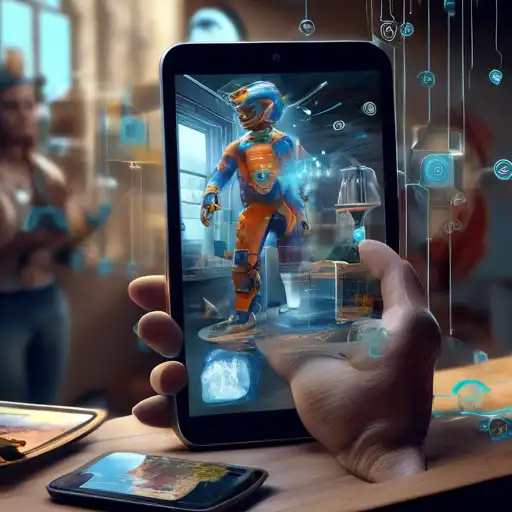Augmented Reality: The Future of Digital and Physical World Integration
Augmented Reality (AR) is rapidly transforming how we interact with the world around us, seamlessly blending digital elements with our physical environment. This innovative technology is not just a futuristic concept but a present-day reality that's enhancing various sectors, including education, healthcare, retail, and entertainment.
Understanding Augmented Reality
At its core, Augmented Reality overlays digital information—such as images, sounds, and text—onto the real world. Unlike Virtual Reality (VR), which creates a completely artificial environment, AR enhances the real world with digital details, offering a composite view that enriches user experiences.
The Impact of AR Across Industries
AR's versatility allows it to revolutionize multiple industries. In education, AR can bring textbooks to life, making learning more interactive and engaging. The healthcare sector benefits from AR through advanced surgical simulations and patient education tools. Retail experiences are being transformed with virtual try-ons and in-store navigation, while entertainment and gaming are reaching new heights with immersive AR games and experiences.
How AR Works
AR technology relies on sophisticated algorithms and sensors to accurately place digital content in the real world. Devices such as smartphones, tablets, and AR glasses serve as the medium through which users can experience augmented environments. The process involves capturing the real-world environment, processing it, and then augmenting it with digital overlays in real-time.
The Future of AR
The potential of Augmented Reality is boundless. With advancements in AI and machine learning, AR experiences are becoming more personalized and interactive. Future applications could include more sophisticated AR in navigation, real-time language translation, and even augmented workplaces that enhance productivity and collaboration.
Getting Started with AR
For those interested in exploring AR, numerous apps and platforms are available to get started. From social media filters to educational apps, the opportunities to experience AR are endless. Developers and creators are also encouraged to dive into AR development, with tools like ARKit and ARCore making it easier than ever to create immersive AR experiences.
Augmented Reality is not just changing the way we see the world; it's redefining our interactions within it. As technology continues to evolve, the line between the digital and physical worlds will blur even further, opening up new possibilities for innovation and engagement.
